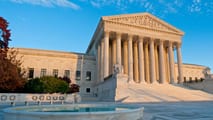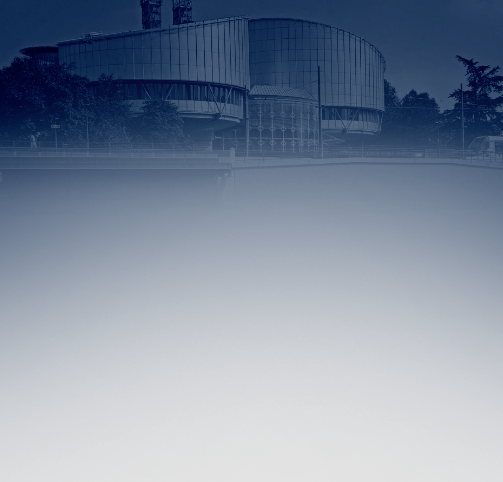

Failing to Pop the Bubble: How Abortion Clinic Bubble and Buffer Zone Regulations Have Diminished Free Speech
Free Speech: Failing to Pop the Bubble
What are Bubble and Buffer Zones?
Exclusion zones outside of reproductive healthcare facilities, like buffer and bubble zones, diminish the fundamental right to freedom of speech. Both the United States and the United Kingdom have faced interesting developments in the realm of bubble and buffer zones outside of abortion clinics. A bubble zone is an area surrounding a patient entering or exiting a clinic.[1] Bubble zones create an invisible barrier between the patient and outsiders, limiting the interaction patients may have with others before and after making a life-changing decision. Buffer zones surround the abortion clinic itself and prohibit outsiders from standing within a certain distance of the building.[2] Bubble zones float and move with the person or object they are attached to, while buffer zones are fixed and stationary. Some exclusion zone laws include both buffer and bubble zones; in these circumstances, the bubble zone only takes effect within the buffer zone.[3] This article addresses how two Supreme Court decisions and a recent bill enacted by the U.K. Parliament have diminished the right to free speech in the U.S., England, and Wales.
Two Supreme Court Cases: Hill and McCullen
Two of the most significant Supreme Court cases regarding exclusion zones outside of abortion clinics are Hill v. Colorado and McCullen v. Coakley. In the Hill case, the issue on appeal was the constitutionality of a Colorado statute that restricted individuals from “knowingly” approaching patients without their consent and with the intent to protest, distribute leaflets, display signs, or provide counsel.[4] The laws involved both a bubble zone within 2.5 meters of the patient and a buffer zone within 30 meters of “any health care facility.”[5] Essentially, this law meant that a person could not get closer than 2.5 meters from a patient with the intent to counsel against abortion if the patient was within 30 meters of a clinic. The consequence of this law was a limitation on speech and the right to voice beliefs. The Court upheld the law and illegitimately weighed the “right to be let alone” against the First Amendment right to freedom of speech.[6] This case contrasts sharply with the holding in the 2014 case, McCullen v. Coakley.
In McCullen, a Massachusetts fixed buffer zone statute prohibited individuals from entering within 10 meters of any part of reproductive healthcare facilities, including public sidewalks.[7] Of course, the law exempted certain persons, such as patients, employees, and emergency and municipal employees, but the general public could not “knowingly enter or remain” near the facilities.[8] The Court held that this law was an “extreme step” that did not justify infringing on the First Amendment right to freedom of speech and accordingly struck down the law.[9] While this decision protected freedom of expression, the Court failed to reconcile Hill with its decision in this case. The Court only mentioned Hill when it referenced the basis for the Circuit Court’s judgment; it neither overruled Hill nor declared it good law. [10] Thus, both Hill and McCullen are binding on the circuit courts despite their contradictory conclusions. The fallout from this failure, as shown through the circuit court cases discussed below, is significant.
The Circuit Court Cases that Followed Hill and McCullen
In August of 2014, directly following McCullen, the 11th Circuit heard the case Pine v. City of W. Palm Beach. In this case, the court upheld the constitutionality of a city law prohibiting the use of amplified sound within a 100-feet (30 meters) radius of healthcare facilities.[11] However, instead of following the precedent from McCullen and holding that this law violated First Amendment rights, the 11th Circuit looked back to the Court’s holding in Hill and permitted the city to maintain its law.[12] While the result from this case may seem reasonable, it of the blatant inconsistency that has arisen because of the Court’s failure to harmonize Hill with McCullen. Future circuit court cases exemplify this inconsistency.
In 2019, the 7th Circuit heard Price v. City of Chicago, and the 3rd Circuit heard Reilly v. City of Harrisburg. Price involved a bubble zone of 2.5 meters and a buffer zone within 15 meters of a healthcare facility, while Reilly involved a buffer zone of 6 meters.[13] The courts upheld the laws in both cases by using Hill as the controlling precedent over McCullen; this was possible because the Court has not reconciled the conflict between Hill and McCullen with a clear line.[14] In its opinion for Price, the court even stated: “Hill directly controls, notwithstanding its inconsistency with McCullen.”[15] As a result, when circuit courts want to uphold a city ordinance similar to Hill that restricts free speech, they can disregard McCullen and use Hill to justify their judgments. Notably, not all circuit courts are following Hill; some have chosen to follow the precedent from McCullen instead.[16]
One of the most recent exclusion zone circuit court cases, Sisters for Life, Inc. v. Louisville, displays a circuit court’s use of the McCullen precedent over Hill.[17] The ordinance, in this case, involved a fixed ten-foot buffer zone around healthcare facilities.[18] The court reasoned that the county’s ordinance resembled McCullen more than Hill and that after McCullen, only “narrowly tailored” buffer zones are constitutional.[19] The judgment delivered in Sisters is how the 3rd Circuit, when dealing with a 6-meter fixed buffer zone, should have ruled in Reilly since the exclusion zone, in that case, was not narrowly tailored and much wider than the 2.5-meter bubble zone in Hill. The contrasting outcomes in Sister’s and Reilly demonstrate the Court’s need to reconcile Hill and McCullen and provide clarity and consistency to circuit courts.
Will the U.S. Supreme Court Act?
Recently, on June 21, the 2nd Circuit heard an exclusion zone case, Vitagliano v. County of Westchester, which involved a county law with an eight-foot bubble zone and a 100-foot buffer zone around reproductive healthcare facilities.[20] The 2nd Circuit upheld the law, but there is debate about whether the Supreme Court may take it up and clarify where the law stands on exclusion zones.[21] The Supreme Court has yet to hear an exclusion zone case since McCullen. Until it does, circuit courts have the freedom to weigh the precedent of Hill over McCullen and diminish the freedom of speech; time will tell if Vitagliano will put an end to the inconsistency.
What is Happening in the U.K.?
Meanwhile, the United Kingdom just passed an exclusion zone bill through the U.K. Parliament titled the Public Order Act of 2023.[22] This bill became an act of law on the second of May. The effect the bill has on freedom of speech in England and Wales is significant: the law makes it an offence to influence anyone’s decision to access, provide, or facilitate abortion services within a safe access zone.[23] Importantly, safe access zones have been designated as areas 150 meters within any reproductive healthcare facility.[24] This law has a severe impact on freedom of speech, as noted by Bishop Jon Sherrington, who warned that the ban “could very easily include many things that should never be criminalised such as prayer, thought, peaceful presence, consensual communication and practical support if they are deemed to influence or interfere with access to the clinic.”[25] Moreover, exclusion zones disproportionately affect those with religious beliefs, as they are often the ones who disagree with the law. As these zones widen, the freedom of speech narrows.
By
_____
[1] Hubert J. Zanczack, Piercing the Bubble: Why Bubble Zone Regulations are Content Based Restrictions on Speech, 15 Seventh Cir. Rev.1, 2-3 (2019).
[2] Id. at 2.
[3] See, e.g., Hill v. Colo., 530 U.S. 703, 707 (2000).
[4] Id. at 707.
[5] Id.
[6] Id., (Scalia, J., dissenting) (rejecting the legitimacy because the “right to be let alone” was established as a right conferred against the government, not the public, as the majority asserted in this case reasoned); see also U.S. CONST. amend. I.
[7] McCullen v. Coakley, 573 U.S. 464, 471 (2014).
[8] Id.
[9] Id. at 496.
[10] Id. at 470.
[11] Pine v. City of W. Palm Beach, 762 F.3d 1262, 1264 (2014).
[12] Id. at 1273.
[13] Price, 915 F.3d at 1109; Reilly v. City of Harrisburg, 790 Fed. Appx. 468, 470.
[14] Price, 915 F.3d at 1119.
[15] Id.
[16] See, e.g., Sisters For Life, Inc. v. Louisville-Jefferson Cnty., 56 F.4th 400 (2022).
[17] Id.
[18] Id. at 403.
[19] Id. at 408.
[20] Vitagliano v. Cnty. of Westchester, 2023 U.S. App. LEXIS 15469, at *18 (2d Cir. June 21, 2023).
[21] Daniel Wiessner, Challenge to abortion clinic ‘buffer zone’ law rejected by US court, REUTERS, (June 21, 2023, 8:45 PM) https://www.reuters.com/legal/challenge-abortion-clinic-buffer-zone-law-rejected-by-us-court-2023-06-21/.
[22] Parliamentary Bills, Public Order Act 2023, Last Events, UK PARLIAMENT, https://bills.parliament.uk/bills/3153/news.
[23] Public Order Act 2023, c. 9 (Eng.), https://www.legislation.gov.uk/ukpga/2023/15/enacted.
[24] Act, Supra note 20.
[25] John Sherrington, Bishop for Life Issues says Public Order Bill will disproportionately affect people of faith, Catholic Church, (March 15, 2023, 9:51 AM), https://www.cbcew.org.uk/bishop-for-life-issues-says-public-order-bill-will-disproportionately-affect-people-of-faith/.











